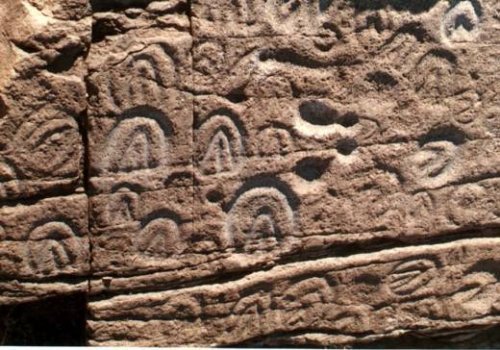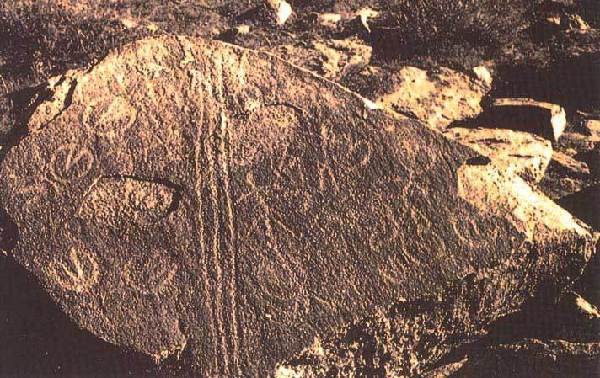The Rock Paintings of Wulanchabu
 |
|
Wulanchabu Rock Paintings are mostly distributed in the inhabited area of the northern horde. |
 |
|
Most of the rock paintings are about livestock and herding, and mainly reflect the living condition of the northern nomads. |
Wulanchabu Rock Paintings are distributed in different areas of Wulanchabu, mostly from Siziwang Banner in the east to Wulate Middle Banner in the west and Ruogeqige Mountain in the northeast.
The rock paintings are mostly distributed in the inhabited area of the northern horde. Most of the rock paintings are about livestock and herding, and mainly reflect the living condition of the northern nomads. The extensive topics and prolific contents vary from wild beasts to fowl, livestock, hunting, pasturing, human footprints, wooden bars, dancing, animal footprints, horoscope, crescent, animal pens, symbols, human images, clouds, the sun, and sex.
According to archeological research, these paintings were made continuously by ancestors a long time ago. Some of them belong to the Neolithic Age, such as vehicles, pasturing, riders and animals. Most rock paintings are about the life of nomads in the Bronze Age. Out of work by ethnic groups like the Huns, Turkic Mongolians and Chinese, the Turkic rock paintings in particular have unique features.
Paintings of the Northern Dynasty (386-581 A.D.), apart from patterns of long pikes and animals, are mainly pictures of different patterns, sketches and abstractions and alphabetical signs, very much like ancient Turkic script. Paintings of the Sui and Tang dynasties (581-907 A.D.) are mainly about god, officials, and tigers. The mural contents reflect social life, customs, habits and reflections on the northern horde.



 Print
Print Mail
Mail





